
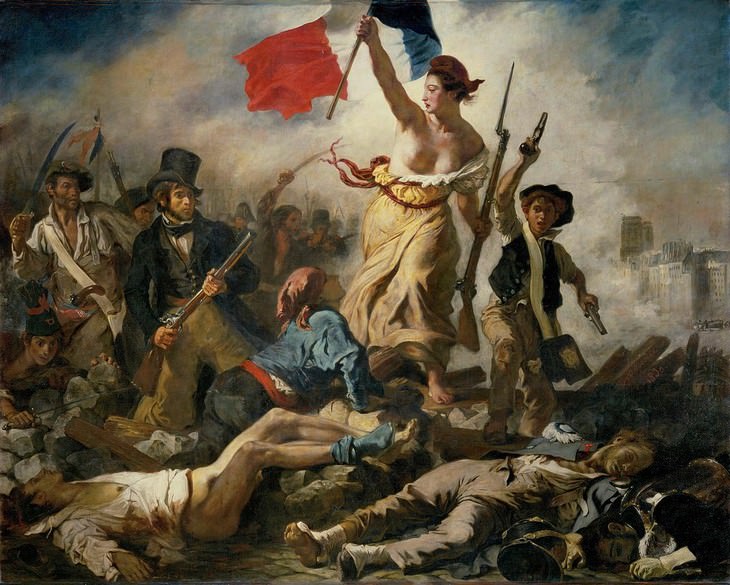
On July 14, 1789, a group of revolutionaries violently invaded the Bastille, a medieval fortress that was used as a state prison. The Storming of the Bastille became known as the event that launched the French Revolution, a period of political and social turmoil spanning over 10 years. Overly-taxed and underpaid, the majority of hungry French citizens finally expressed their anger towards the Royal Family and demanded justice. Although the revolution officially ended by 1799, tension spilled into the 19th century, including the event depicted in Delacroix’s famous work.
Liberty Leading the People is the artist’s allegorical take on what is now known as the July Revolution or the Second French Revolution - a conflict that took place on the 27th, 28th, and 29th of July, 1830, over the ever-present question of who should rule France. The symbolic female figure who is leading the fighters to victory is believed to be Marianne, a personification of the French Republic. She is triumphantly holding the tri-color (which began as the flag of the revolutionaries and is now the official flag of France) and proudly wearing a Phrygian cap, a hat historically worn by freed slaves in Greece and Rome.
Delacroix, who lived in Paris during the July Revolution, experienced the intensity and chaos first hand. “Three days amid gunfire and bullets, as there was fighting all around,” he wrote in 1830. He created Liberty Leading the People to express his support of the cause, commemorate those who lost their lives for it, and honor France. “Although I may not have fought for my country, at least I shall have painted for her,” he revealed. “It has restored my good spirits.”
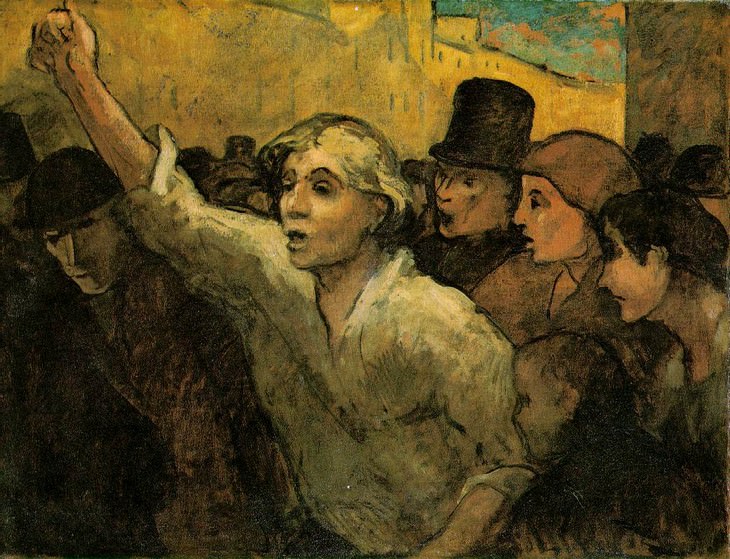
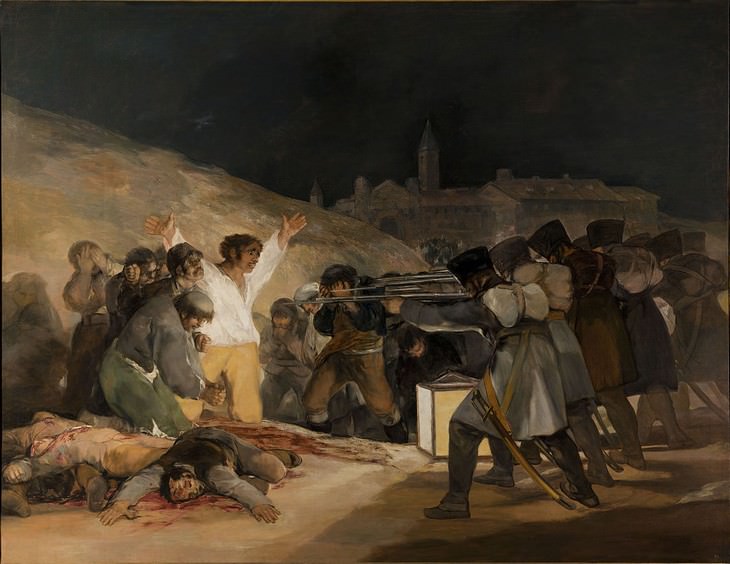
Unlike the two previous artists we mentioned, Francisco Goya does not glorify revolution in his radical painting The Third of May 1808 (Execution of the Defenders of Madrid). The Peninsular War was a military conflict between Spain and Portugal against the invading French forces for control of the Iberian Peninsula. The painting, which was commissioned by the Spanish government and completed the same year the revolution occurred, pays tribute to the Spanish civilians who lost their lives trying to liberate their country. It graphically captures a moment during which French soldiers opened fire on defenseless captives. The onlookers of the execution cover their eyes, knowing the same fate awaits them. The city and civilization are far behind them. Even a monk, bowed in prayer, will soon be among the dead.
Although Goya is considered an Old Master he is seen as a forefather of modern art at the same time. In fact, The Third of May is considered the world’s first modern painting. In 18th century art, battle and death were represented as a bloodless affair with little emotional impact. Goya’s painting, by contrast, shows the ugliness and tragedy of war. Not only the theme of the work is ‘revolution’, but the entire artistic approach and technique themselves are revolutionary in their innovation. “It can be called revolutionary in every sense of the word, in style, in subject, and in intention,” explained the British art historian Kenneth Clark.
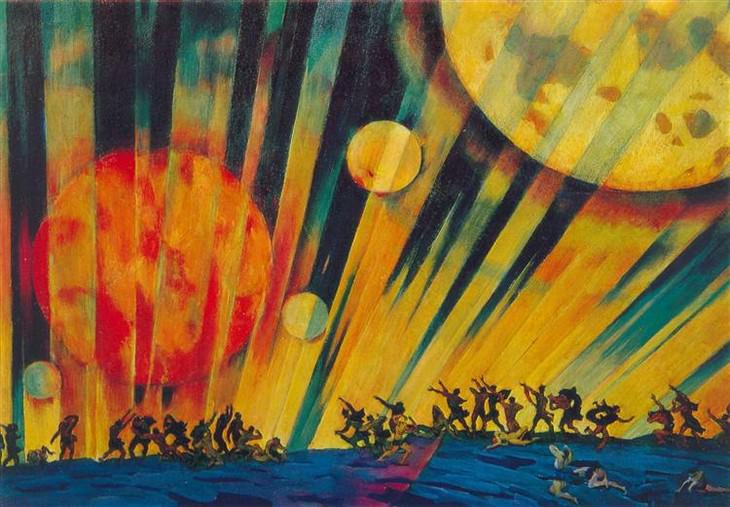
The Russian Symbolist painter Konstantin Yuon offers a completely different representation of revolution in New Planet. The work is an otherworldly interpretation of the October Revolution, a cataclysmic insurrection led by the Bolshevik Party in 1917. It was an instrumental event, which resulted in the overthrow of the ruling Provisional Government. The Bolsheviks and their allies occupied government buildings and other strategic locations in Petrograd and soon formed a new government with Lenin as its head.
At the time, Yuon was working on a canvas intended to become a theatrical decoration. Just during the creation of the canvas, the October Revolution took place, and in Yuon's eye turned Russia into a ‘new planet’. The dark sky is illuminated by the glow of red and yellow celestial bodies, while the people on the ground are left bewildered, confused, and afraid. Perhaps, the artist compares the dramatic social change with the end of the world, or rather the end of one world and the beginning of another.
Related Article: 13 Paintings that Changed the Art World
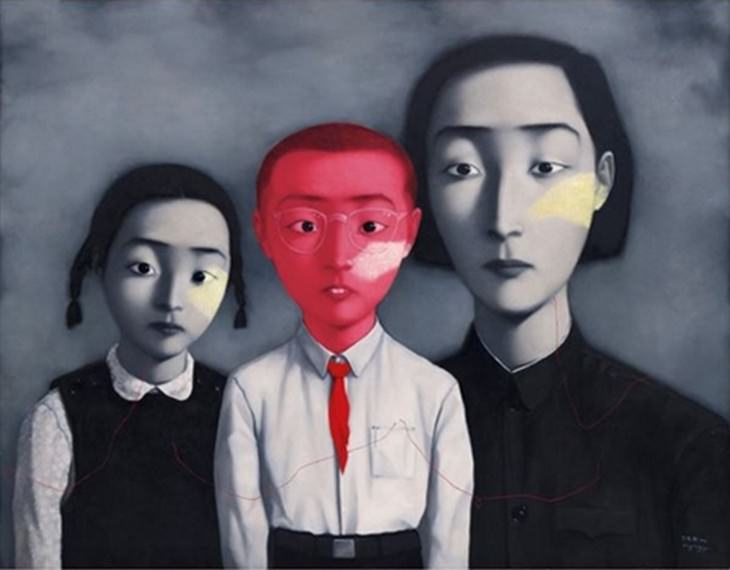
This work was created in 1995, which renders it the most contemporary one on the list, indicating revolution continues to be a subject that fascinates and inspires artists. The painting above is part of a series called Bloodline/ A Big Family by the artist Zhang Xiaogang, who drew inspiration from family photos taken during the Proletarian Cultural Revolution, a painful and violent period in China’s history.
The cultural revolution erupted in 1966 when Mao Zedong sought to strengthen his control over the Communist party. On top of a collapsed economy and a death toll likely in the millions, this revolution culminated in the destruction of China’s material culture. This period of upheaval lasted until Mao’s death in 1976.
In Bloodline/ A Big Family the artist creates familial portraits that combine the aesthetic of traditional Chinese charcoal drawing and European surrealism. Xiaogang’s paintings engage with the notions of identity and family - immediate, extended, and societal. The portraits depict a genealogy of imagined forefathers, unnervingly similar yet with minute differences. These changes symbolize the rift between generations caused by the immense cultural change the country went through in a short period of time.
Share this article with your art-loving friends